All The Same: Violence & The Western Anti-Hero In LOGAN
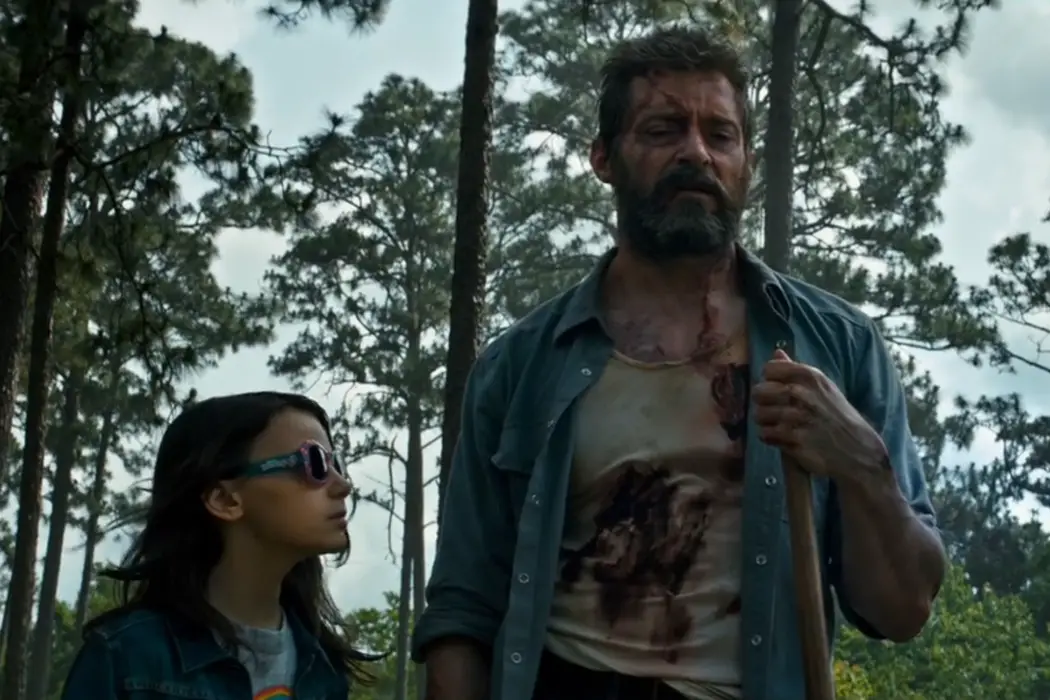
Brian Walter is a college professor by day and a…
Spoiler Alert: This commentary discloses several plot revelations in Logan.
One of the key bonding moments in director James Mangold’s anti-blockbuster blockbuster Logan (2017) finds the title character commiserating with his newfound daughter, Laura, about their nightmares.
Laura: I have nightmares. People hurt me.
Logan: I have nightmares too. I hurt people.
Laura: I hurt people, too. Bad people.
Logan: [sadly] All the same…
Is Logan saying (as a kind of self-reproach) that you will have nightmares ‘all the same’ whether the people you hurt are good or bad? Or, more ominously, is he saying that it doesn’t matter whom you hurt because all people are (in effect) ‘bad people’?
It’s not easy to say. On screen, Hugh Jackman’s delivery of the line comes across ambiguously, even ambivalently, certainly allowing for the grimmer implication that all human people (‘bad’ or no) are, in fact, one and the same.
These questions and their misanthropic implications hang over and entangle the film’s designs on a moral conscience. Falling to the claws of Logan’s Wolverine or to Laura’s semi-feral 11-year-old successor, are we, in fact, all the same? Does their righteous rage need to bother trying to distinguish ‘good’ from ‘bad’ people? Just how much do other lives matter in the face of the monstrous crimes that Logan’s and Laura’s forcibly re-engineered bodies inflict on them by their very existence?
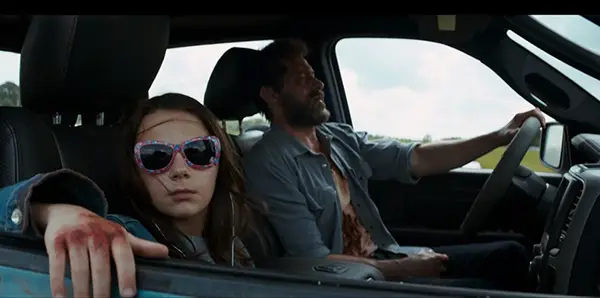
In Logan, father and daughter quite literally embody the horrors of a viciously sophisticated society where the hunger for power seems to corrupt all relations and violence seems the only way of life, breeding cynicism, despair, and a misanthrope’s version of self-righteousness in the face of outrageous crimes against our better natures. Logan’s and Laura’s very existence as human weapons of obscene governmental conception and production repudiates ours as a species. So they do not so much redeem as they purge the world’s sins with their triumphantly irresistible violence. As a result, the more the film’s story-line sends them even verifiably bad people to hurt, the more unsettling this otherwise touching exchange seems to become.
Go West, Old Man
Complicating the film’s moral designs still further, Logan makes itself a bold, self-conscious heir of the Western, a genre that has, over the last century and more, repeatedly set men to work against the vast, overwhelming frontier to purge the dross of civilization from their minds and recover a glimpse — usually by means of some character-redefining violence — of some lost but pined-for Eden, their hard-won piece (as it has been stylized) of the ‘American Dream.’ My film studies mentor liked to refer to John Ford as our Homer, using his camera to lionize John Wayne and Jimmy Stewart as our Achilles and Odysseus. For WASP America, the Western has been our foundation myth, setting the six-shooter-sporting action hero in a cowboy hat up as a beloved icon of tenaciously-revered and -defended innocence.
Still more challengingly, Mangold’s quasi-oater has arrived at what feels like a particularly fraught moment for America’s long-running romance with the Western. Can any film — even an expertly grunged-up Western like Logan — appeal to viewers across the political spectrum in Trump’s remarkably and bitterly divided America?
The answer seems to be a cautious yes. Critics on both the left and the right have found political messages in Logan to celebrate, some of the former seeing indictments of the lurid, race-baiting invective associated with Trump’s campaign while at least one critic on the opposite end of the political spectrum has hailed it as the ‘first paleoconservative superhero film.’
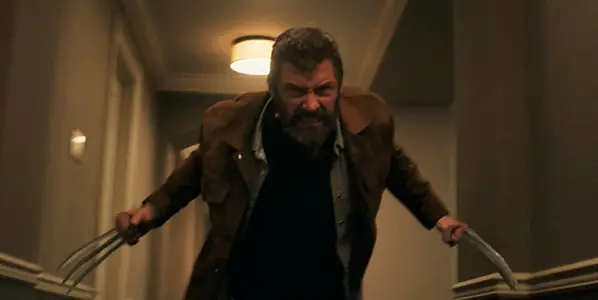
Political co-optations aside, what struck me most was Logan’s canny adaptation of Hollywood’s signature genre in ways that help it appeal to the still-coveted middle-aged male demographic. In fact, with a less disciplined performance by the ever-appealing Jackman in the lead, the adaptation of these tropes could often come across as downright cynical, milking myths of the heroically and bitterly seasoned and most alone of rangers who plays judge, jury, and executioner in a show of improbable but essential and irresistible moral clarity (or moral cowardice, depending on one’s perspective) easy to find in many Westerns and other Rupert Murdoch properties.
Hell of a Thing
The film makes its debt to Shane (1953) clear throughout, even having Laura recite, near the end, a key speech from that 1953 Western standard to question the use of violence as a means to some semblance of peace. But it is the film’s evocation of another uneasy Western that Mangold has nominated, Clint Eastwood’s deconstruction of the genre in Unforgiven (1992), that may still more potently emphasize Logan’s curious and instructively mixed take on the vortex of masculinity and violence forever swirling at the heart of the genre.
Screen deaths may have come cheap and fast in the Western traditionally, with ‘bad guys’ and Hollywood’s typically (and painfully) caricatured ‘Indians’ falling by the dozen in film after film, but Eastwood’s film famously took a stand against the exploitiveness of screen violence. One of the tag-lines from Unforgiven has Eastwood’s Will Munny instructing a pugnacious young would-be killer in the indelible horror of his ambitions: “It’s a hell of a thing, killing a man. You take away all he’s got, and all he’s ever going to have.”
Logan clearly aims for much the same tortured territory in its treatment of killing violence. Like Unforgiven, sending out its grizzled, retired, but legendary killer into danger on behalf of a victimized female; moreover, like Will Munny, Logan’s primary motive for much of the film is money, not justice. Jackman’s Logan is every bit as hopelessly agonized and spiritually broken as Eastwood’s Munny. But even so, could this film’s hero offer the same insight to his young charge? Is it still a hell of a thing to kill a man in Logan?
For WASP Warriors
To answer this question, one may have to look no further than the film’s take on one of Hollywood’s stock figures, the heroically staunch, morally unfettered loner male, a world-wounded, world-weary ultra-pragmatist not easily moved to anger but, once committed, possessed by heaven’s own fury in a righteous cause. This is, arguably, where Logan scores its clearest win, serving up, among other things, irresistible tom-catnip for any craggy, bearded, self-mythologizing armchair warrior who has ever summoned his braggadocio in the face of a saucy challenger to say, “I didn’t start this fight, but if you keep it up, I’ll sure as hell finish it.”
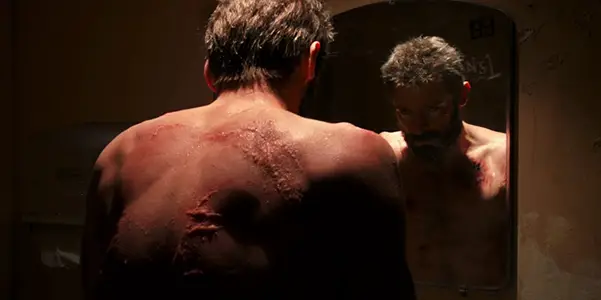
If the film remains as skeptical of this righteous male avenger’s depleted masculine prowess (stoked only to its necessary levels here by a special mutant-serum jolt, just as Will Munny needs whiskey to get his proper massacring mad on), it nevertheless sanctions and endears it with a variety of scenes and developments that reveal deep, nurturing roots in American guy culture. Maybe it’s a hell of a thing for Logan to kill a man, but it’s not a hell of a thing for us to cheer him (not to mention Laura) on as he does it over and over again in gouts of righteous rage.
In the film’s opening scene, for instance, drunken chauffeur Logan only really lights into the young Mexican toughs raping his limo after they shoot him and are laughing at him face-down on the ground. When a man’s had enough, he’s finally had too much, so a bellowing Logan pops his claws and proceeds to dismember and eviscerate his heedless tormentors until the few survivors finally take heed and flee. The shot of a blasted, beaten, gouged, and bleeding but somehow still formidable middle-aged man forcing his way up through his cluelessly violent juniors is as absurd as it is almost helplessly compelling, a physical manifestation of every ‘win-one-for-the-ol’-Gipper’ half-time speech that Hollywood has ever dreamed into being.
And it’s not just the literal violence that makes a hero of middle-aged jadedness. When a wounded and no longer self-healing Logan wakes up in a small-town doctor’s office, his torso ravaged beyond repair, he (of course) disregards the orders of the horrified and quaintly middle-aged doctor who insists he go to a hospital for proper medical care.
Logan’s on a mission, and no chart-and-stethoscope-jockey — no matter how kindly and right he may be — is going to keep him from making his heroic sacrifice. The rare educated white-collar professional who shows up on screen in this film inevitably serves as a voice of feminized prudence (or — in the case of Richard Grant’s Dr. Rice — grotesque, Nazi-like ‘medical experimentation’); he simply doesn’t stand a chance in this real man’s man’s movie-world.
With these and many similar elements, Logan clearly serves up a superhero variant in a long, long line of Hollywood portraits of white American males’ preferred image of themselves as gruff, deadly, but selectively tenderhearted action heroes. But inevitably, this invincible, clear-minded, and morally-charged figure has to turn manliness itself into an irresistible force, reducing everyone else around him to a mere means to his final triumph.
White and Black
Crucial to the American version of this hero (as Toni Morrison, Leslie Fiedler, and others have argued) is the enabling (and thus feminized) black man, and this film serves up a whole family of them to help our hero show off his bona fides in the infliction of moralized violence. The Munsons are corn farmers and horse ranchers who show up conveniently in the middle of the film, a father, mother, and their teenage son who take Logan and his companions in for supper and a showdown with the Reavers, the gun-toting racists who are trying to force the family off their property with acts of sabotage and escalating threats.
Where Logan has previously had a hard time sobering up to dispatch the Mexican gang, he has no trouble at all taking out these ‘Okie dickheads’ while Munson looks on wonderingly. It does not matter that Munson has been dealing with the Reavers for years, nor that he and his family will presumably have to continue to deal with them after Logan departs forever the next morning. What matters is that the Munsons give Logan a superb opportunity to demonstrate the fixed calibration of his moral compass to true North, a white man rescuing a kind, pleasant, but comparatively helpless black counterpart.
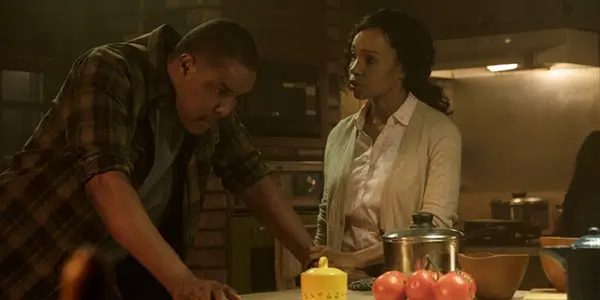
The Munson interlude also features a telling scene between the teenager son and the restless, curious Laura. After dinner, she visits him in his room, where he (a self-sacrificing chip off the old feminized block) generously offers her his earphones and music device. In his room, among images of Native Americans and horses, the largest and most prominently framed portrait shows Abraham Lincoln. Why would this teenaged African American put a portrait of the 16th U. S. president front and center instead of, say, an image of Russell Westbrook or Chance the Rapper? (Or, to demonstrate his political conscience, even Malcolm X or Eldridge Cleaver or Martin Luther King?)
Perhaps the simplest answer is that this film serves up a middle-aged white man’s dream of his most action-ennobled self. So the younger Munson is also a middle-aged white man’s dream of a non-threatening African-American youth who would revere a white man as mythologized by Steven Spielberg and John Ford as he has been by conservative media-barkers like Bill O’Reilly and Rush Limbaugh.
The Lincoln portrait is a perfect (if rather patronizing) plant for a film that cares (as studio-driven Hollywood always has) less about red- and blue-state dissonances than about raking in as much green as it can — particularly from Fox productions’ darling demographic of middle-aged males. The Munson interlude shows that you can carefully acknowledge racism in 21st-century America but still have your overpowering white male action hero too.
Both a Warrior and a Martyr
From this perspective, Logan not only taps deeply into myths of the Western’s action hero, but even evokes Mel Gibson’s efforts to deliver an almost macho Jesus in The Passion of the Christ. Like Gibson eroticizing and almost fetishizing Jesus’ body in his heroic ability to bear up under prolonged and unspeakable torture, Mangold manages to make Logan simultaneously a warrior and a martyr by dwelling on his ravaged but still trim, muscular body, a railroad junction of scars and sucking wounds not quite obscuring his remarkably flat abs. Better not mess with this martyr; he’s going to emancipate his fellow mutants come hell or high water (or triumphal and symbolic arboreal impalement, as it turns out).
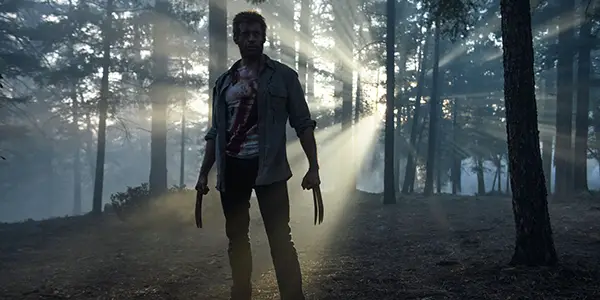
The mutant children whom Logan has saved in Eden (the place he insists throughout the movie to be a mere myth) tilt the cross on his grave down on its side to honor the most popular X-Men, as they leave for the freedom he has finally secured for them. But even to place a cross at his burial spot is telling. Where, in Unforgiven, Gene Hackman’s Little Bill Daggett uses his dying breath to curse his killer, “I’ll see you in Hell, Will Munny,” Logan inspires (even if just briefly) the vision of a believer’s eternal reward in exchange for his sacrifice. The clever touch of X-tilting the cross only galvanizes his status as a manly renegade of a savior.
This is not to suggest that the movie offers nothing but red meat for red-staters. Logan is an unmistakably (if sometimes oddly) intelligent and self-consciously sophisticated film; the allusions to Vladimir Nabokov’s Lolita, for example — a very different but perhaps even more hellish story of the American road — jump out in this context. So too do the touches of dark comedy that crop up around Patrick Stewart’s F-bombing Professor Xavier and Stephen Merchant’s irresistibly wan and sadly witty Caliban. With their help and Jackman’s disciplined, unsentimental performance, the film sometimes evokes the dystopian moral devastation that Alfonso Cuaron so brilliantly achieved in 2006’s Children of Men, another road-movie set in a near-future hellscape.
But in the end, it is the violence in Logan — filtered and subtly idealized through a carefully, judiciously-endeared father-daughter bond — that provides the film with both its mass appeal and its literal climax. The orgy of killing that inevitably ends the film can’t help making it indeed feel much (if perhaps not quite all) the same as in other films whose heroes guarantee their status as such with the body counts that they, against impossible odds, finally pile up. As hard as Unforgiven works to prove that it’s a hell of a thing to kill a man, Will Munny still delivers a whole pile of fresh kills in the film’s hellish (and helplessly satisfying) ending — and Logan predictably, successfully, even (in unsettling ways) winningly follows suit.
The poster for Logan features a close-up of Laura’s child-hand clasping her father’s, with Wolverine’s claws extruded. The image perfectly (perhaps all too perfectly) suggests what the film delivers: innocence lovingly, dramatically, and (finally) chillingly indoctrinated into the ways of killing violence. When the innocent’s nightmares are all the same as the grizzled warrior’s, then Logan — and perhaps the Western, and perhaps even Hollywood’s long, long history of catering to moneyed male self-regard — is no longer unforgiven.
Does Logan justify all of its killing?
Logan was released in the U. S. on March 3rd.
Does content like this matter to you?
Become a Member and support film journalism. Unlock access to all of Film Inquiry`s great articles. Join a community of like-minded readers who are passionate about cinema - get access to our private members Network, give back to independent filmmakers, and more.
Brian Walter is a college professor by day and a hopelessly sleepy college professor by night. His work has appeared in a variety of literary and film studies publications, and he appears as an 'old coot' interviewer with a magic camera in the final chapter of Donald Harington's final novel, "Enduring." He lives a short walk from the St. Louis Zoo with his remarkably patient, loving wife and a quirky assortment of canine and feline familiars.













